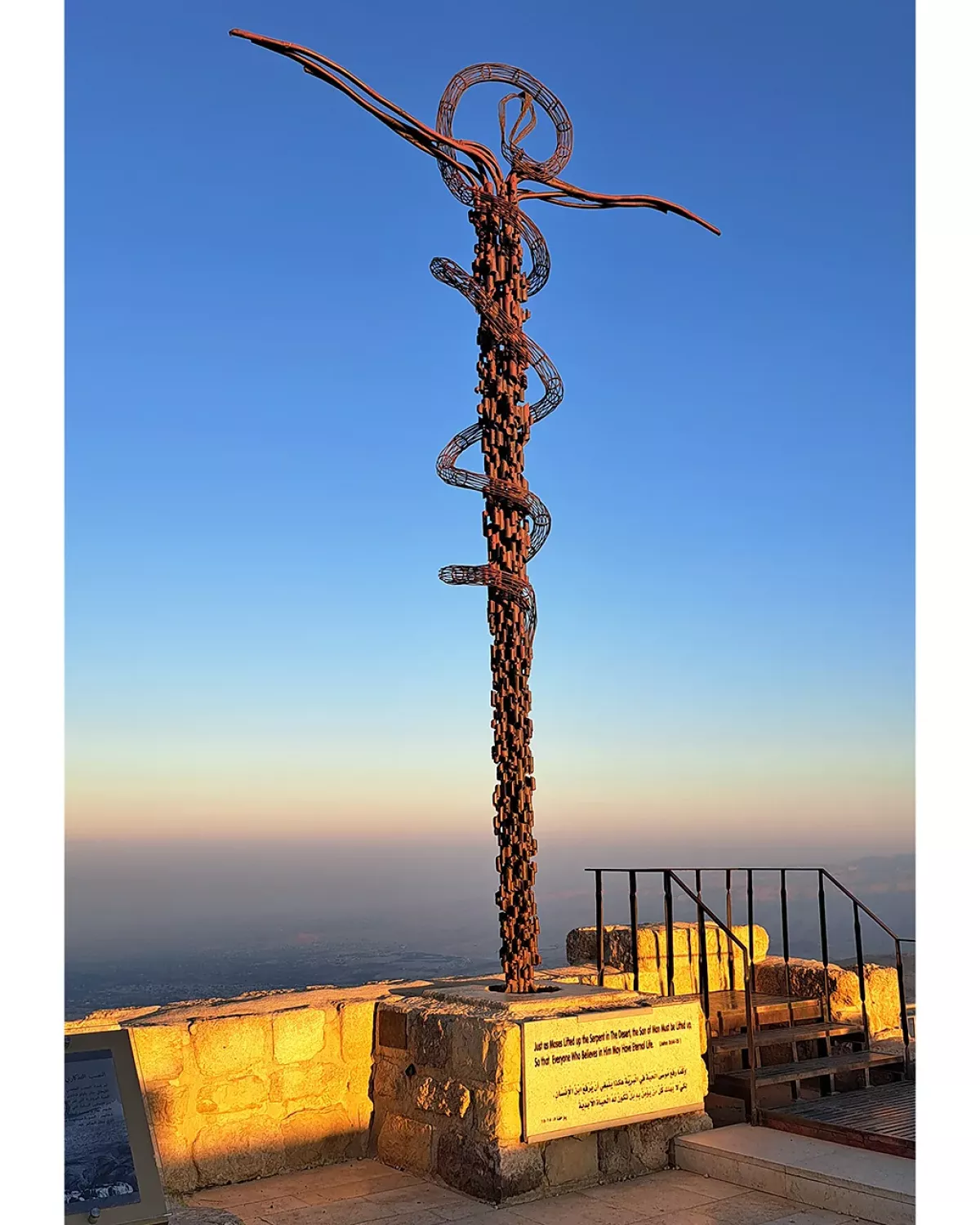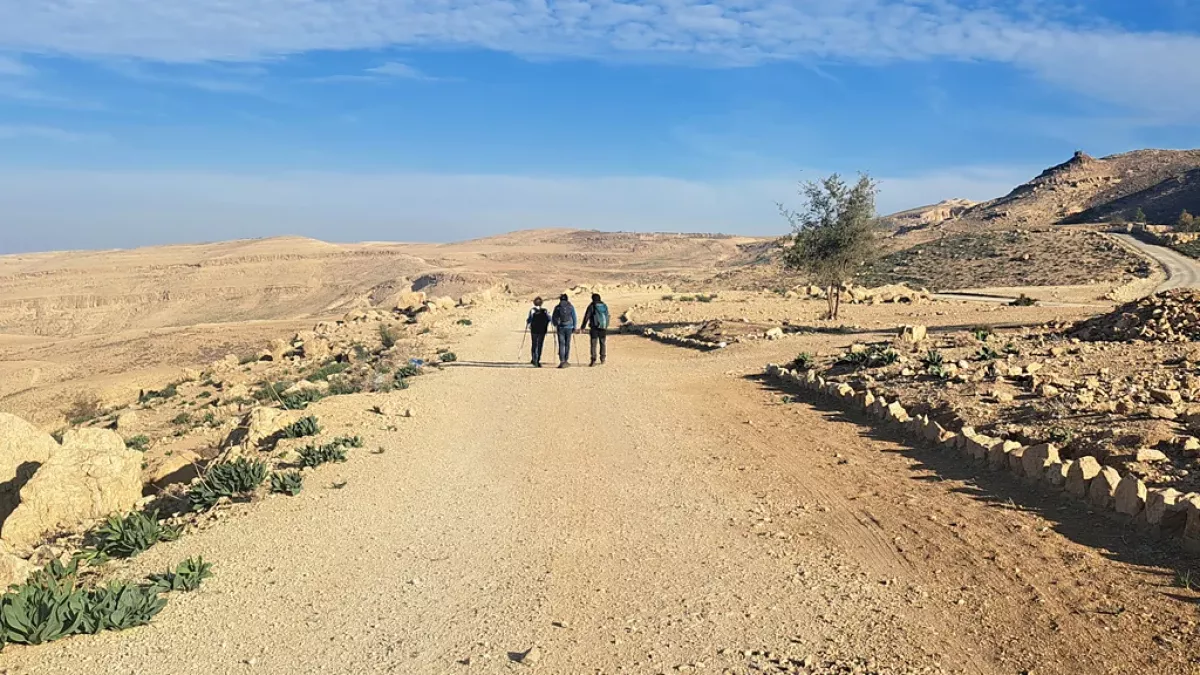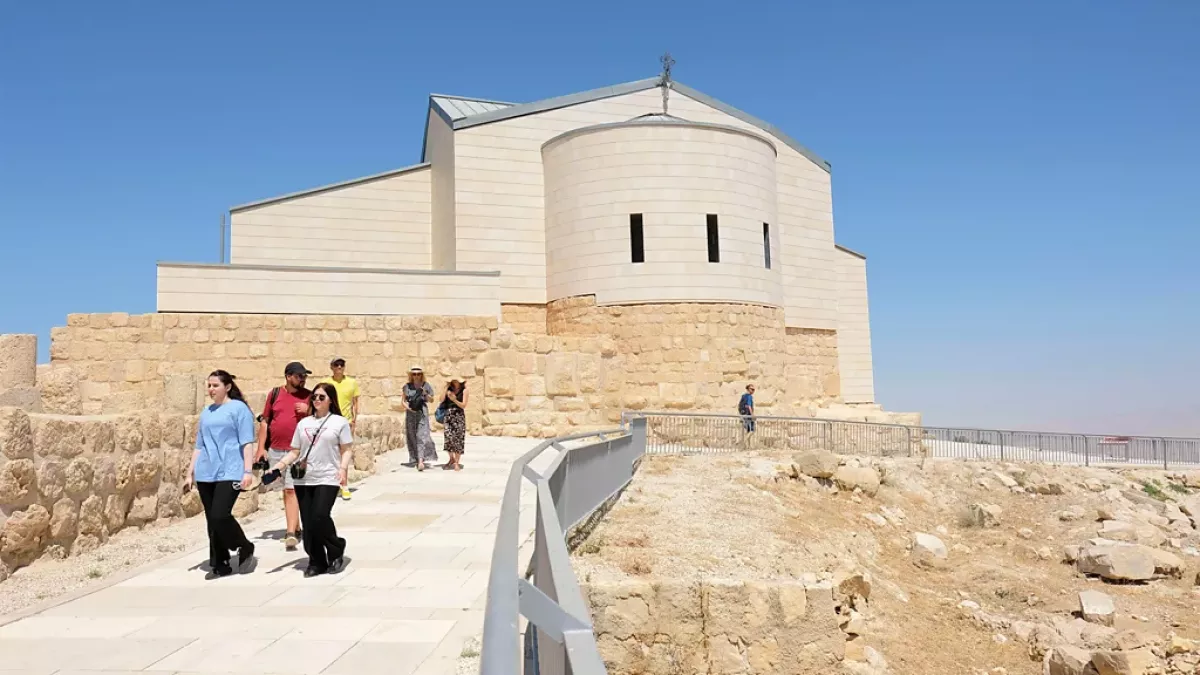Jordan's new pilgrimage route revives ancient journey of 4th-century nun Photo
A newly established 50km pilgrimage trail in Jordan retraces the steps of a 4th-Century nun who journeyed through the Holy Land—centuries before Spain’s renowned Camino de Santiago.
The Camino de Egeria, named after the Spanish nun believed to have made the journey, begins at Mount Nebo, a sacred peak standing 610m above sea level, Caliber.Az reports via foreign media.
On clear days, the breathtaking view stretches to the Dead Sea, Bethlehem, and Jerusalem. According to biblical tradition, this was the final place Moses beheld before his passing. Today, it marks the starting point for pilgrims and walkers embarking on the three-day hike.
Silvano Mezzenzana, a recent participant, described the vista as “magical,” recalling how the sun illuminates the Palestinian landscape and the ancient city of Jericho in the morning, before casting dramatic silhouettes over the Judean hills at sunset. “Up there, you don’t even realise you’re on a mountain,” he remarked.

Stretching from the eastern edge of the Great Rift Valley, the route weaves through farmland and rugged hills, offering a lusher landscape compared to the 800km Camino de Santiago, which draws around 500,000 pilgrims annually. The trail was recently renovated as part of a collaborative initiative between Jordan and Spain, announced in January, to promote their respective cultural heritage. Authorities hope it will gain similar recognition to its European counterpart.
Egeria’s journey pre-dates the Camino de Santiago by five centuries. She is thought to have travelled by donkey from Jordan through Palestine, Egypt, Syria, Mesopotamia, and Asia Minor, documenting her visits to biblical sites. Her writings, considered one of the oldest surviving pilgrimage accounts penned by a woman, remained largely unknown until the 1880s. An incomplete 11th-Century manuscript provides the oldest known record of her route.

The Camino de Egeria typically takes three days to complete, though some opt for a shorter two-day trek, while others prefer a more leisurely five-day experience. The terrain is moderate, but the daily 17km distance makes it unsuitable for complete beginners. Recent improvements, including wider paths through valleys and hills, have made the journey more accessible, with Jordan’s Ministry of Tourism hoping to attract international visitors.
Nadeen Dabbas, a lifelong Jordan resident, found the experience deeply moving. “Although I’ve lived in Jordan all my life, walking this trail showed me parts of the country I’d never seen before,” she said, recalling the flowing waters of Moses Springs and the verdant fields of bananas and corn in the Jordan Valley.

The first major landmark along the route is a 4th-Century monastery built by Egyptian monks in memory of Moses. Expanded over the centuries, it became a basilica adorned with mosaics that still stand today. The trail continues through the ancient city of Livias before reaching Al-Maghatas, or Bethany beyond the Jordan, a UNESCO World Heritage site believed to be the location where John the Baptist baptised Jesus.
Here, pilgrims can explore Byzantine and Roman-era remains, including chapels, churches, and John the Baptist’s cave. Walkers can even spend a night in one of Bethany’s pilgrim houses near the Jordan River before completing the route at the King Hussein Bridge on the Jordan-Israel border.
Anne McGowan, associate professor of liturgy at the Catholic Theological Union and co-author of Pilgrimage of Egeria, highlighted the nun’s historical significance. “Egeria’s account is remarkable as one of the oldest surviving pilgrimage narratives, and the first definitively written by a woman,” she explained. Pilgrimage to the Holy Land became less common after the 7th Century, aside from a resurgence during the Crusades. It was not until the 19th Century that such journeys regained popularity, fuelled by the Romantic era’s enthusiasm for personal experience and historical exploration.
While religious interest has waned in many parts of the world—atheists now outnumber theists in the UK, according to a study published last year—trail supporters believe the Camino de Egeria can attract a new generation. Oscar Koshebye, a Spanish national and avid hiker, played a key role in formalising the trail. He envisions the route as a means of fostering interfaith dialogue and cultural exchange.
Koshebye’s fascination with Egeria began five years ago when he was considering a walking route to Jerusalem. After researching her journey, he shared his idea in a YouTube video, which led to collaboration with Jordan’s tourist board and the Spanish embassy. His goal is to extend the trail a further 30km to Jerusalem, another key stop on Egeria’s journey, and to enhance infrastructure with additional signage and guesthouses.
McGowan believes that pilgrimage routes need not solely appeal to the religious. “Younger generations still seek spiritual fulfilment, even if their journeys are less tied to traditional beliefs,” she said. “Long walks like this can still provide a profound inner experience, much like Egeria’s, which was about immersing herself in as many places as possible.”
As development continues, those involved in the project hope Jordan’s historic trail will one day attain the same cultural significance as Spain’s Camino de Santiago. Mezzenzana is already convinced. “Not only would I recommend it,” he said enthusiastically, “but I plan to do it again.”
By Aghakazim Guliyev








